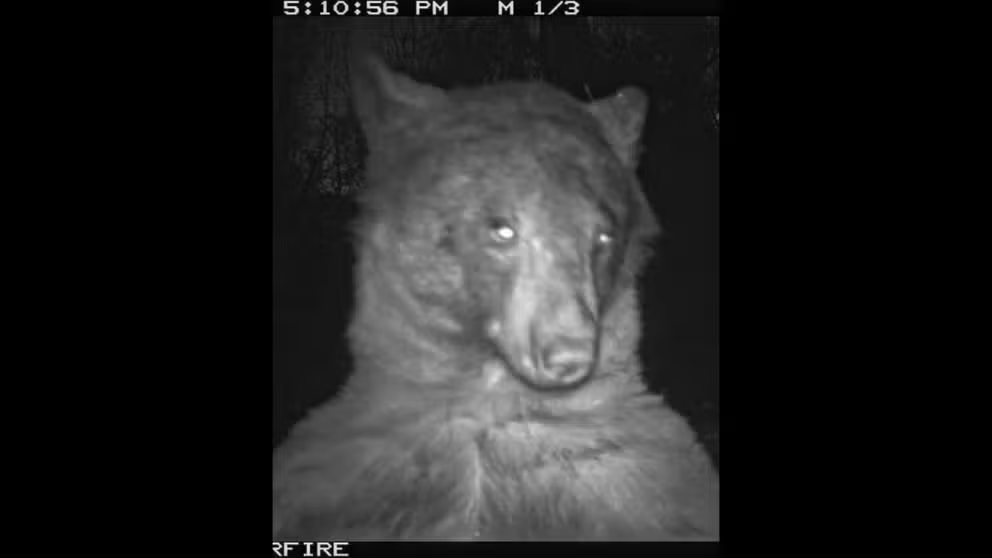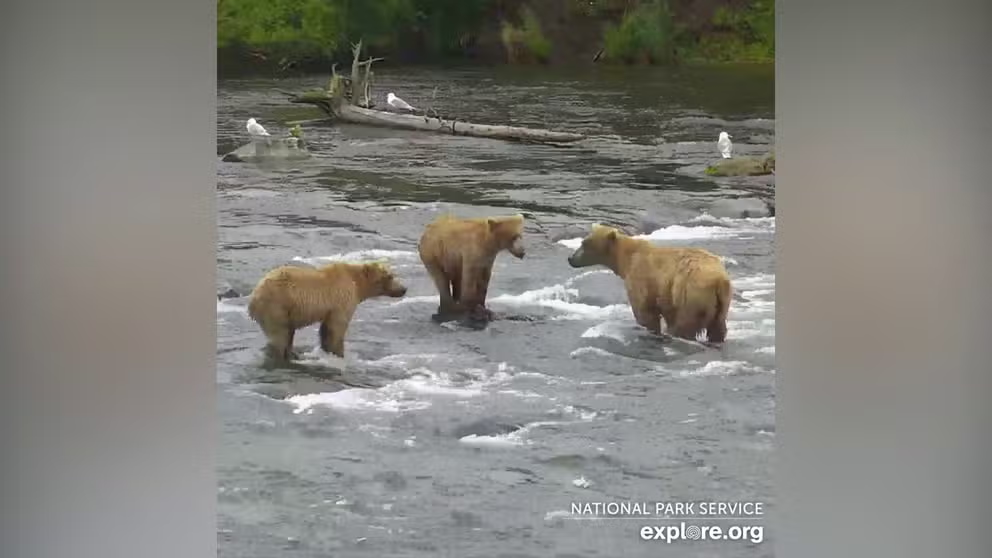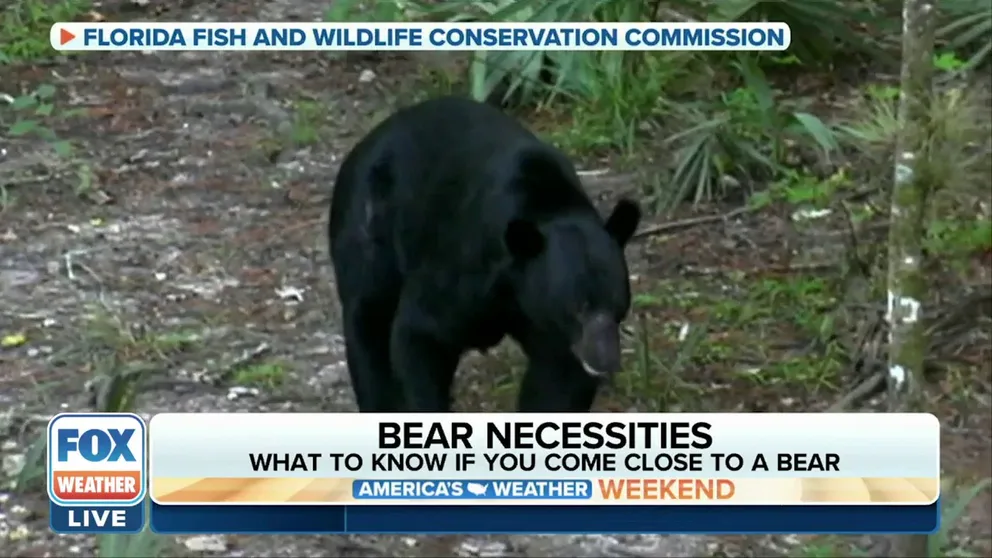US mulls lifting protections for grizzly bears at Yellowstone, Glacier national parks
The federal agency said it would now conduct a yearlong study of the grizzly bear in the Northern Rockies to determine if Montana, Wyoming and Idaho will be allowed to remove endangered species protections for grizzly bears.
Bear takes around 400 'selfies' after discovering wildlife camera in Boulder
A bear took around 400
The U.S. Fish and Wildlife Service said it had received "substantial" information that grizzly bears have recovered from the threat of extinction in the Northern Continental Divide Ecosystem and the Greater Yellowstone Ecosystem that could warrant the removal of the animal from the Endangered Species Act in those regions.
The federal agency said it would now conduct a yearlong study of the grizzly bear in the NCDE and GYE to determine if they qualify as their own distinct population segment.
"If those findings result in proposing one or more DPSs for delisting, the service will consider those in the context of the ongoing recovery for the rest of the population in the larger listed entity," the agency said in a press release.
The move comes after the USFWS received three petitions from Wyoming, Montana and Idaho to remove ESA protections for grizzly bears.
The petitions from Montana and Wyoming prompted the USFWS to conduct the yearlong study. At the same time, the agency found the petition by Idaho to remove the grizzly bear from the ESA in the lower 48 states "does not present substantial, credible information to warrant further action."
AGENCIES EVALUATE OPTIONS TO RESTORE GRIZZLY BEARS TO NORTH CASCADES AFTER POPULATION VANISHES
Montana, Wyoming welcome the USFWS announcement
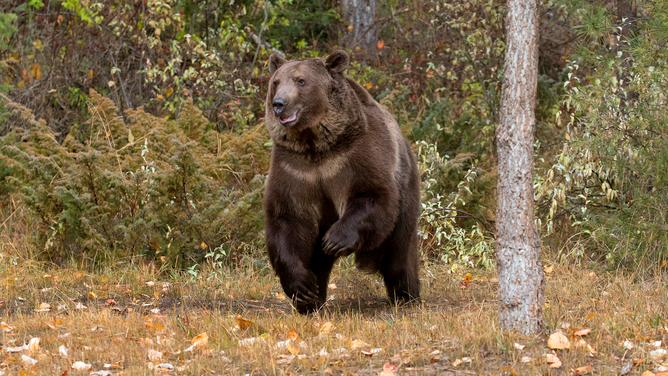
FILE - Grizzly Bear (Ursus arctos horribilis) adult running out of woods, Montana, USA, October, controlled subject. (Photo by: Avalon/Universal Images Group via Getty Images)
(Getty Images)
Montana Gov. Greg Gianforte petitioned the federal government to delist the grizzly bear in the NCDE, home to Glacier National Park, in December 2021. He claims the grizzly bear population, around 1,100 in the NCDE, has far surpassed recovery goals and that Montana Fish, Wildlife and Parks has a structure in place to successfully take over full management of the species.
"After decades of work, the grizzly bear has more than recovered in the NCDE, which represents a conservation success," Gianforte said in a statement. "As part of that conservation success, the federal government has accepted our petition to delist the grizzly in the NCDE, opening the door to state management of this iconic American species."
Wyoming Gov. Mark Gordon petitioned the USFWS in January 2022 to delist the grizzly bear in the GYE, home to Yellowstone National Park.
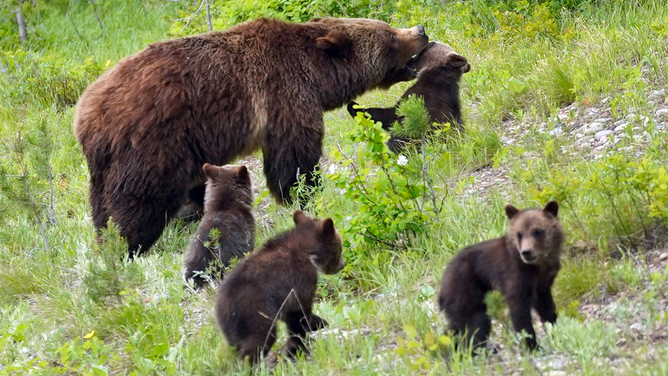
FILE - JACKSON, WY - JUNE 15: A Grizzly bear named "399" walks with her four cubs along the main highway near Signal Mountain on June 15, 2020 outside Jackson, Wyoming. (Photo by George Frey/Getty Images)
(Getty Images)
Gordon praised the announcement from the federal agency, citing all the hard work that has been done to protect the bear in that state.
"This is a positive step and I thank the Service. Wyoming's petition, filed early last year, shows that after 46 years, and over $52 million dollars of investment by Wyoming sportsmen and women, the population of the bear is far above long-established recovery goals," Gordon said in a statement. "In addition, Wyoming has an established framework to provide adequate protection and management of the bear in the future."
Gordon said Wyoming already has a grizzly bear management plan in place. That plan will be amended to recognize the necessary legal requirements to satisfy the Endangered Species Act requirements for post-delisting management.
WATCH: BEAR LANDS ON CALIFORNIA ROOF AFTER TREE TOPPLES AMID ATMOSPHERIC RIVER-FUELED WINDSTORM
Idaho will sue the federal government
Momma bear and cubs go fishing in Alaska river
Grazer and her two young cubs are seen standing in the shallow water of the Brooks River looking for food after awaking from hibernation.
Idaho Gov. Brad Little said he intends to sue the federal government for what he says was its failure to follow the law and make a required finding on the state's petition to remove grizzly bears from the endangered species list.
"Idaho's entire congressional delegation and I are lockstep in our demand for answers from the federal government about grizzly bear delisting," Little said in a statement. "Idaho has continually demonstrated leadership in species management, and we expect the federal government to uphold its duties in providing clarity around issues that greatly impact a variety of activities on the ground in our state."
Idaho petitioned the government to delist the grizzly bear last year because it claims it does not qualify as a "species" under the Endangered Species Act.
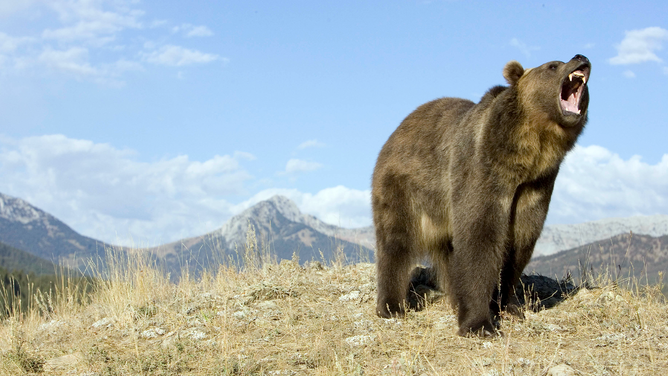
FILE - Grizzly bear growling USA. (Photo by: Avalon/Universal Images Group via Getty Images)
"Under the ESA, the U.S. Fish and Wildlife Service was required to make a 90-day finding by June 7, 2022, but failed to do so," the statement said.
Little said the USFWS has failed to provide information as to why it hasn't made a determination on the state's petition despite requests to discuss it several times.
"A determination on Idaho's petition is what the ESA requires and what grizzly bear conservation and Idahoans deserve," Little said. "Unless USFWS makes the initial determination on Idaho's petition within the next 60 days, we intend to file suit."
3 ODDLY-ACTING MONTANA GRIZZLIES PUT DOWN AFTER CONTRACTING BIRD FLU AMID OUTBREAK OF DISEASE
Why lift federal restrictions for grizzly bears?
What to know if you come close to a bear
Fall is in full swing, and so is bear activity. If you're seeing bears more frequently lately, don't be alarmed. You may see more bears during the fall months as they prepare to go into their winter hibernation. You definitely don't want to get too close to them. Luckily, there are ways to stay aware and be safe if you do find yourself near one. David Telesco, bear management program coordinator for the Florida Fish and Wildlife Conservation Commission, joins FOX Weather.
Before 1800, the USFWS says an estimated 50,000 grizzly bears roamed in all or part of 18 states in the western U.S. But they were seen as a significant threat to humans and livestock with the arrival of Europeans to North America.
Grizzly bears were shot, poisoned and trapped wherever they were found, the USFWS said, and that led to a dramatic reduction in the grizzly bear population. The population had fallen to just 2% of its peak population by the 1930s.
By 1975, the grizzly bear population in the U.S. had fallen to between 700-800 in the lower 48 states. The grizzly bear was added to the endangered species list in July of that year, and the population has been increasing since then.
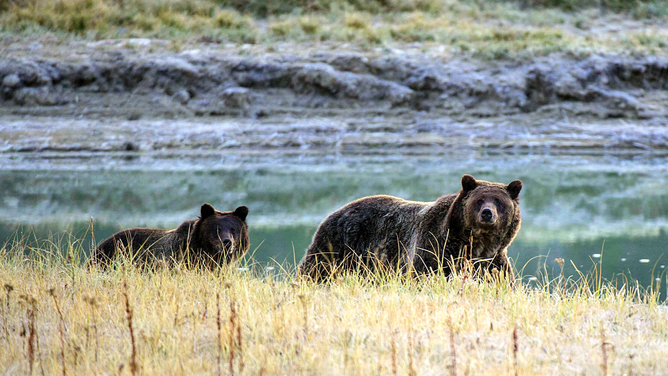
FILE - A Grizzly bear mother and her cub walk near Pelican Creek October 8, 2012 in the Yellowstone National Park in Wyoming.Yellowstone National Park is America's first national park. It was established in 1872. Yellowstone extends through Wyoming, Montana, and Idaho. The park's name is derived from the Yellowstone River, which runs through the park. AFP PHOTO/Karen BLEIER (Photo credit should read KAREN BLEIER/AFP via Getty Images)
(Getty Images)
While the grizzly bear population has increased, so has the human population. The states seeking to lift the federal protections want to gain control of grizzly bear management and offer hunting to the public.
The bear and human populations are growing, leading to safety issues. But while encountering a bear is still considered rare in many parts of the country, Chris Servheen, a wildlife biologist who previously served as the USFWS's national grizzly bear recovery coordinator, believes human migration is leading to increased sightings.
"We see more and more people moving into their habitats now," he previously told FOX Weather. "And what that means is that there's more conflicts with bears because people are building houses and places where there are never houses before."
